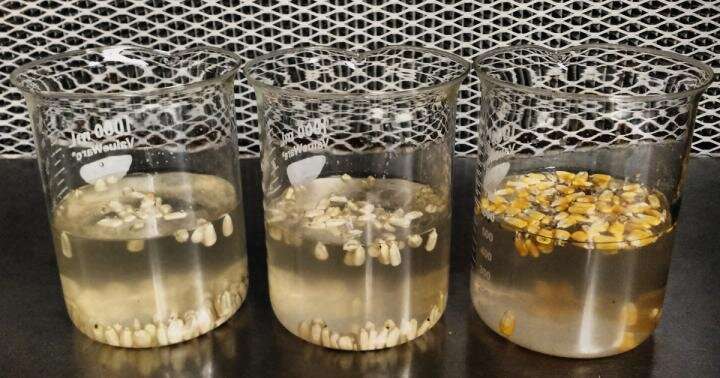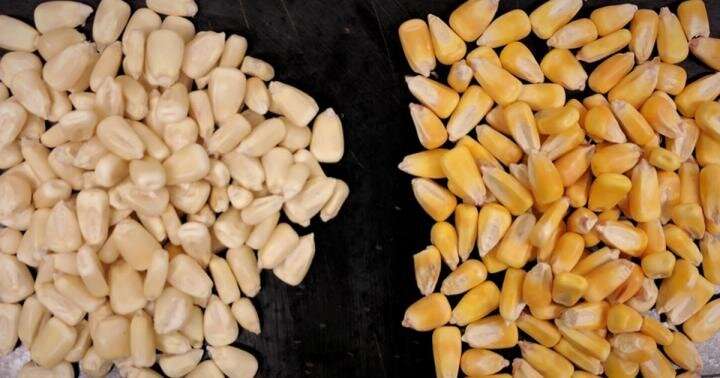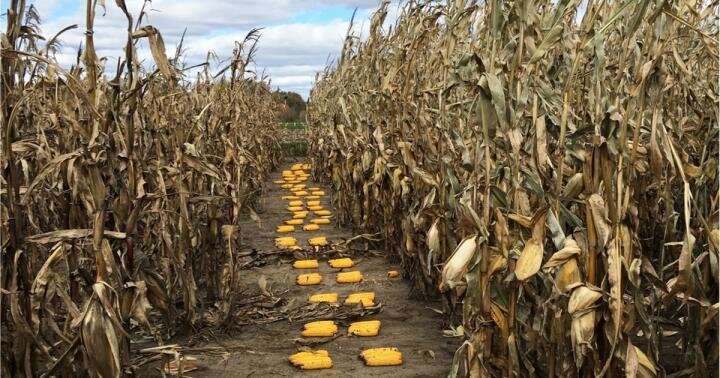Giving a chip about masa

Products we commonly buy at the supermarket, such as tortillas and corn chips, are made from food grade corn. The corn is grown, harvested, bought by a food company, turned into masa (dough from ground corn) through a chemical process, and then made into our favorite products.
Each of these important steps has implications for the next—and some scientists are calling for more research to make each step better to benefit both companies and consumers.
"Breeding, production, and processing of food grade corn is a massive industry," explains Candice Hirsch from University of Minnesota. "Yet, there is limited knowledge on each of these steps."
She adds that each step of this value chain spans many scientific areas. This results in the information being spread across scientists who don't regularly communicate with each other. To start tackling this problem, Hirsch and her team reviewed knowledge on making corn into food products. They used information from both universities and industry.
The researchers laid out the importance of corn quality and masa quality. Hirsch says that the breeding of food grade corn receives relatively few resources. However, this corn is made into products we eat. Better quality corn will provide a better product to consumers.
Better corn would have a higher yield, costing companies less money and possibly making the product cheaper. It could also increase the quality and consistency of the products we buy.

The hardness of the corn kernels, for example, is important. It can affect how well the corn ships and how many of the kernels crack during shipping. These cracks then affect the moisture uptake while the masa is being made.
Combined with other qualities of the kernel, such as starch levels, the amount of moisture taken up by the ground corn can impact the masa.
"The quality of grain and masa is extremely important to the final product quality," Hirsch explains. "If the consistency of the masa is not correct, there will be consequences for the texture and taste of the final products."
Hirsch and her colleagues would like to see researchers explore all of these areas to better understand how to breed and grow the best corn for making high quality masa. The work would involve plant breeders, agronomists, chemists, food scientists, production specialists, and many others.
"Ideally we would like to determine which attributes are best to allow us to breed better corn, and also come up with methods to be able to quickly test these attributes," Hirsch says. "Another application is doing screening so companies buying corn can determine if a shipment has the necessary attributes to make a high-quality product."

She adds that the collaboration between University of Minnesota, PepsiCo, and Corteva was critical in reviewing research in this area. In working together, they were able to define what was known and unknown across the value chain, and how to fill the gaps.
Additionally, the public is interested in this work because we like to know where our food comes from. The researchers' review provides a look at how corn chips are made. It also identifies factors that affect taste, texture, and nutritional aspects of chips.
"I have worked in a number of research activities that involve improving raw plant material for direct human consumption," Hirsch says. "I find it very rewarding. It is very relatable to the general public, which makes it a great way to connect with people."
More information: Mark Holmes et al, Food-Grade Maize Composition, Evaluation, and Genetics for Masa-Based Products, Crop Science (2019). DOI: 10.2135/cropsci2018.10.0605
Provided by American Society of Agronomy




















